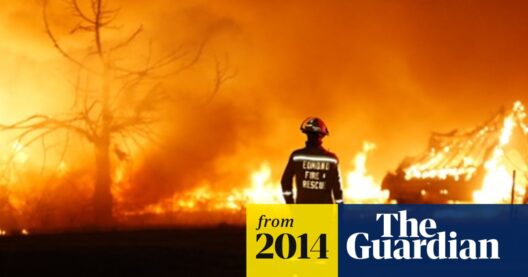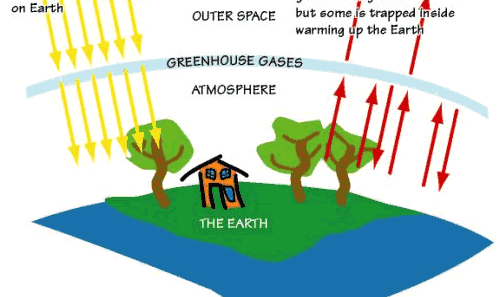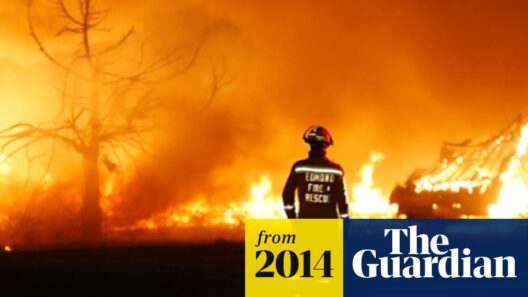In the intricate web of climate change, everyone is familiar with the heavyweights: carbon dioxide and methane. However, lurking in the shadows, often overlooked, is a formidable greenhouse gas: nitrous oxide (N2O). This odorless gas, which is sometimes referred to as “laughing gas” due to its anesthesia properties, plays a significant role in the escalation of global warming. Though it may seem benign, nitrous oxide is a dangerous player in the climate game, possessing a global warming potential over 298 times greater than carbon dioxide over a century. To fully grasp the nitrous threat, we must delve into its sources, impacts, and viable countermeasures.
At its core, nitrous oxide is primarily a byproduct of agricultural practices. Enhanced fertilizers composed of nitrogen compounds, when applied in excess to crops, face microbial action in the soil that transforms them into N2O. This cycle is akin to a well-intentioned gardener whose excessive watering leads to drowning instead of growth. When farmers over-fertilize, intending to bolster yield, they unintentionally release this potent greenhouse gas into the atmosphere. Moreover, animal waste management, particularly from large-scale livestock operations, contributes significantly to nitrous oxide emissions. As manure decomposes, microbial processes convert the nitrogen within it to N2O, a pervasive and insidious pathway to atmospheric degradation.
Beyond agriculture, industrial activities and the combustion of fossil fuels also play a crucial role in the emission of nitrous oxide. Processes such as fossil fuel combustion in vehicles, power plants, and manufacturing facilities release nitrogen oxides (NOx), which can subsequently convert into nitrous oxide. These industrial emissions introduce N2O into the atmosphere, further compounding the greenhouse effect. The dual threat of agriculture and industry generates a ceaseless cycle of nitrogen conversion that exacerbates climate change.
The ramifications of nitrous oxide’s presence in the atmosphere extend beyond mere temperature rise. This gas contributes to stratospheric ozone depletion, affecting solar radiation levels penetrating Earth’s surface. The repercussions are profound: the loss of ozone allows harmful UV rays to increase, potentially exacerbating skin cancers, cataracts, and damaging crops. Additionally, the warming effects triggered by nitrous oxide alter weather patterns, leading to increased frequency and intensity of storms, droughts, and floods. Communities worldwide bear witness to the outcome of this climactic tug-of-war, revealing vulnerabilities within the fabric of societies that can no longer withstand the pressures of a changing climate.
Combatting nitrous oxide pollution is not merely an environmental issue; it’s integral to global health, food security, and economic stability. To confront this challenge effectively, strategies must be multi-faceted, addressing both the agricultural sector and industrial processes. The adoption of precision agriculture stands at the forefront of possible solutions. By employing data-driven techniques, farmers can optimize fertilizer applications, ensuring that crops receive the essential nutrients without excess. This method not only minimizes N2O emissions but also enhances crop resilience, fortifying food systems against the unpredictable shifts of climate.
Furthermore, the integration of cover crops and crop rotation can significantly mitigate nitrous oxide emissions. These practices enhance soil health, promote biodiversity, and improve nutrient uptake, effectively locking in nitrogen and reducing the need for synthetic fertilizers. The implementation of these sustainable agricultural practices could resemble a protective shield, safeguarding the environment while maintaining productivity.
In the realm of livestock farming, improved manure management practices are essential. Techniques such as anaerobic digestion can convert manure into biogas, significantly reducing N2O emissions while simultaneously generating renewable energy. This transformation acts as a circular solution, converting potential pollutants into valuable resources. Moreover, adopting feed additives and dietary adjustments for ruminants can lower the nitrogen content in manure, thereby targeting emissions at the source.
Regulatory frameworks and international cooperation are equally vital in the battle against nitrous oxide emissions. Countries need to collaborate on negotiating and enforcing stricter emissions standards, just as nations have come together to address other significant environmental issues. By creating incentives for industries to reduce N2O, such as carbon pricing or cap-and-trade systems, governments can encourage innovation and investment in cleaner technologies. International treaties could facilitate shared resources and knowledge, enhancing the global response to this atmospheric threat.
Individually, we have a role to play as well. Citizen engagement in sustainable practices—such as supporting local farmers who prioritize eco-friendly methods, reducing meat consumption, and voting for policies conducive to environmental well-being—can collectively foster transformative change. Engaging in dialogue about climate action amplifies awareness and pressures industries and governments to act, creating a grassroots movement that resonates within policy discussions.
As we grapple with the persistent specter of climate change, nitrous oxide should not be dismissed as a mere footnote in the annals of greenhouse gases. Whether through synergistic agricultural practices, innovative waste management, robust regulatory policies, or individual actions, the urgency of addressing the nitrous threat cannot be overstated. The narrative we craft around this elusive gas will dictate our trajectory into the future. By unraveling its complex interplay with the climate and implementing actionable solutions, we can mitigate its impact and pave the way towards a sustainable world, safeguarding the planet for future generations. The time for action is now; every small change has the potential to combat the larger, looming threat of global warming.






